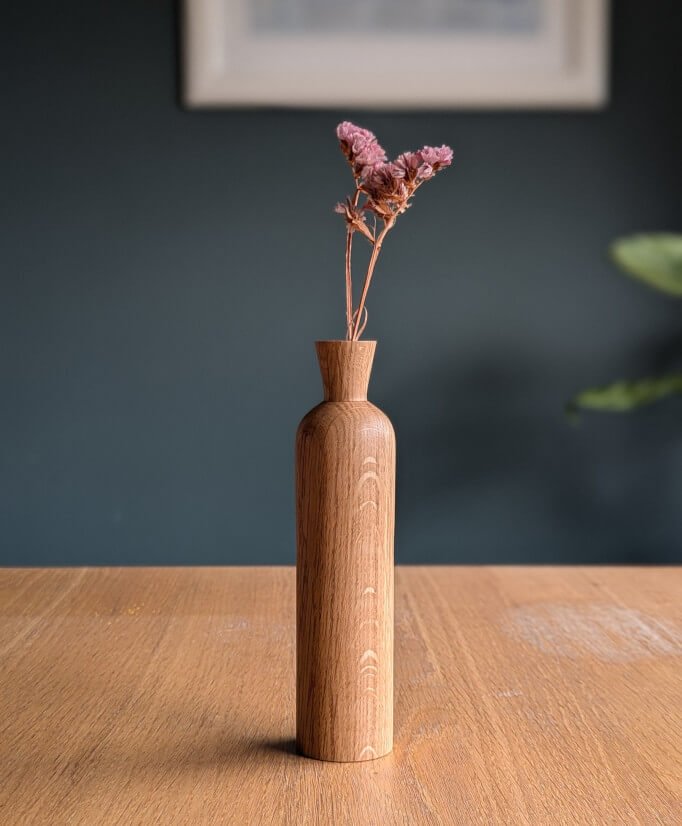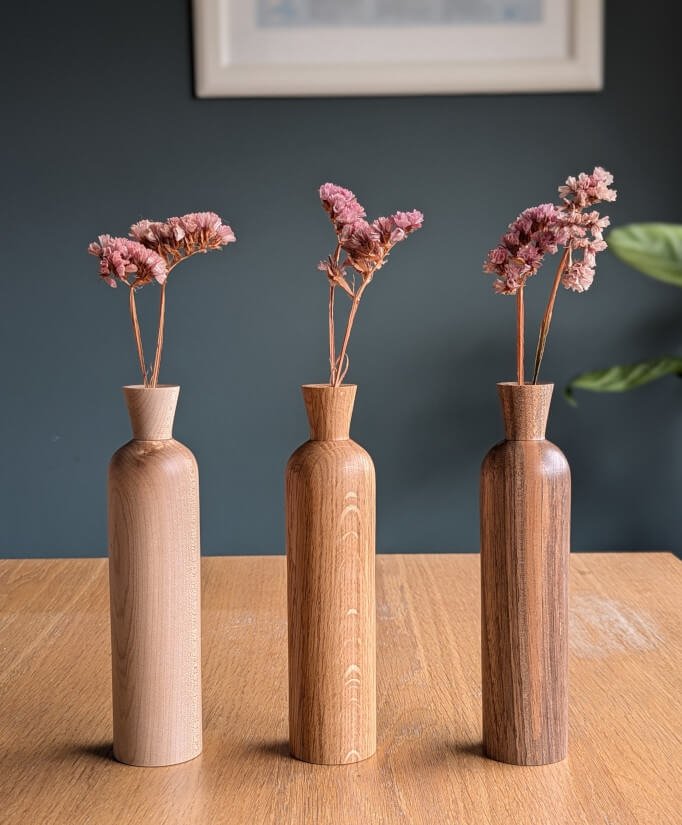How Wood Grain Tells a Story
No two pieces of wood are ever the same.
That’s what draws me to it time and time again.
The fact that I am working with years of growth, pressure, and weather.
Every knot, ripple, and spalting line is part of the tree’s story. A tree that was growing long before I was on this planet.
And by creating something from the timber, we can give the end of the tree’s life some kind of meaning. Hopefully create some beauty to put into the world.
What is wood grain?
When we’re talking about the wood grain in a piece of timber, we’re talking about the the alignment and arrangement of a tree’s fibres.
Depending on how the tree grew, and how the wood was cut, the grain can take on different shapes and patters.
It might look straight, curly, or wildly unpredictable.
Then, the way in which those fibres react with light, or how they absorb a finish can create a visual depth to a new object.
Spalting, knots, and figure
Spalting is a natural colouring that comes from fungi.
Which may sound a bit gross to begin with but is a reminder that decay and beauty often go hand-in-hand.
When wood spalts, it can create soft, inky lines or dramatic contrasts. A lot of that will depend on the species and the conditions in which the wood has been stored.
The knot marks are where branches once grew. They can provide some texture, pattern, and sometimes resistance.
Figuring is often seen as a shimmering curl. Some people compare it to a quilted effects, or birds-eye pattern.
Each one is a visual echo of the tree’s life.
These aren’t flaws in the wood. They’re features.
When I choose which side of a blank to turn, I’m thinking about how those grain patterns will flow in the finished piece.
Why imperfections matter
Every defect is worthy.
Mass-produced objects are often smooth, uniform, and lifeless.
But the vases and bowls I make tell a deeper story.
They remind us that natural is irregular. That what we call "imperfection" can be what makes something real. This especially true in a world which is becoming more and more engulfed in AI.
I want to offer something different.
Take a closer look
You’ll see it in the pale ribbons of spalted beech bowls.
In the swirling centre of a sycamore vase.
In the contrast between dark and light on a piece of Scottish oak.
The wood I use isn’t always flawless - it’s been full of life.
Bring a story into your home
Each bud vase or wooden bowl carries a unique fingerprint of the tree.
When you buy a handmade wooden piece of decor, you’re bringing in a quiet piece of natural history.
A reminder that it is good to slow down.
A testament to the beauty of nature’s own design.







